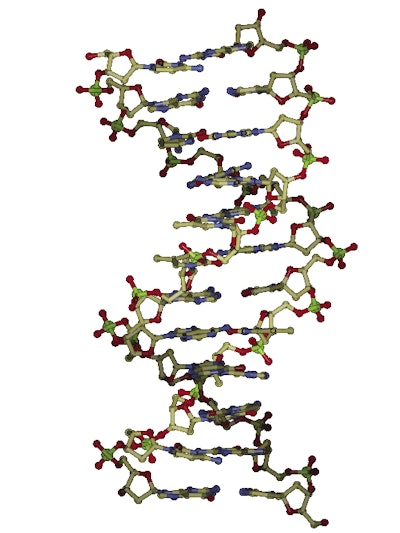
Molds have served humans for centuries in the production of foods (e.g., ripening cheeses and sausages). These living organisms produce various fungal metabolites, some of which we use as antibiotics (i.e., penicillin), and some with the potential to produce severe adverse health effects.
The toxic substances which are produced by molds are termed mycotoxins. A mycotoxin is produced under special conditions of moisture and temperature. Not all types of mold (fungi) can produce mycotoxins. In fact, some fungi are able to produce mycotoxins only in special conditionssuch as at specific levels of moisture, stress and the correct temperature. Even those with the ability to produce mycotoxins may not produce them all the time. The absence of mycotoxins doesn't ensure the absence of fungal spores, so it's possible for fungi to "appear" when the temperature and humidity are right.
Mycotoxins are defined as "secondary fungal metabolites that are produced from primary metabolites and secreted into the microenvironment around the mold, and when consumed or absorbed by animals and humans can cause illness or behavioral changes" (Cousins, et al., 2005). Mycotoxins represent a diverse group of chemicals that can occur in and on a variety of plants from which food is derived, but those representing the greatest hazard occur in commodities, which tend to be consumed in large amounts by a large percentage of the population (such as peanuts and the cereal grains, barley, corn, rye and wheat).
Poisoning by a mycotoxin is termed mycotoxicosis. Active research on mycotoxins is a fairly recent development, since reports of mycotoxicosis were relatively infrequent and occurred in remote places of the globe where proper agricultural practices were not exercised. As a result, interest in mycotoxins remained only a curiosity for researchers until publication of a series of reports in 1960-1963. These reports linked the death of turkeys in England (so-called "turkey X disease") and ducklings in Uganda with the consumption of peanut meal feeds containing mold products produced by the contaminant Aspergillus flavusa condition termed aflatoxicosis.
Discovery
The additional discovery of aflatoxin metabolites (e.g., aflatoxin M1 found in the milk of cows consuming aflatoxin-contaminated feed) led to more intensive studies of a number of mycotoxins and to the identification of a variety of these toxins associated with adverse human and animal health effects. Aflatoxins were first identified by their blue or green fluorescence with ultraviolet light, but now, subgroups are identified as B1, B2, G1, and G2. It is also now known that at least one additional mold produces aflatoxini.e., Aspergillus paraciticus.
Aflatoxins are most often described as potent liver toxins, but their effects in animals vary with species (and breed), dose, length of exposure and nutritional status. Among the various mycotoxins, the aflatoxins have been the subject of the most intensive research because of the extremely potent hepatocarcinogenicity and the observed toxicity of aflatoxin B1 in ratsthe most commonly used experimental model. Suppression of the immune system seems to be a common effect, making the animal more susceptible to newly-acquired disease, a senescent disease becoming fulminant or an infection resulting from stress or trauma. The losses sustained from companion animal toxicity and death are incalculable.
Sources
As noted earlier, aflatoxin is a product of the mold growing on the commodity. The two primary sources of mold contamination emerge during the growth of the plant, with certain conditions favoring Aspergillus sp. growth such as drought and other stresses which allow insect damage and mold attack, as well as inadequate storage conditions.
Since the discovery of their potential threat to health, progress has been made in decreasing the level of aflatoxin in specific commodities. Control measures include use of resistant crops (with genes inserted to produce natural pesticides preventing the survival of insects that carry mold spores on their bodies) and ensuring adequate storage conditions (primarily by lowering the moisture content of the grain, preventing mold growth). These precautionary steps are followed by careful monitoring of susceptible commodities for aflatoxin level and banning the lots that exceed the regulatory "action level" of 20 parts per billion for aflatoxin B1 (because it is the most toxic type and is regarded as the "sentinel" substance for all other aflatoxins).
Once a batch is found to contain a higher than tolerable amount of aflatoxin, the batch must be discarded in its entirety. Under certain circumstances, a batch may be rehabilitated with the use of radiation to destroy the mycotoxin, or the batch may be blended with mycotoxin-free grain to lower the overall amount. Current research into mycotoxin reduction involves the mixing of certain types of clays with the contaminated grain to absorb the mycotoxin, but this technique is still in the experimental stages.
Other toxins of interest
Aflatoxin represents just one type of mycotoxin produced by Aspergillus. It is known that another mycotoxin, cyclopiazonic acid (a muscle tissue toxin), is often produced concomitantly with aflatoxin, but the effects of aflatoxin (especially at high levels) are so dramatic that the effects of cyclopiazonic acid are not seen.
Aspergillus flavis represents only one of approximately 70,000 known species of fungi. There are potentially hundreds of thousands of unique mycotoxins, but only 300 have been positively identified. Discovery of a new mycotoxin most often follows a tragic poisoning after exposure to large amounts; but because mycotoxins usually occur in small amounts, it is possible they account for a number of insidious conditions (including birth defects, impaired immunity and decreased disease resistance, cancer promotion, mental illness and generalized, non-specific conditions resulting in decreased life span of man and animals).
At this point in the development of knowledge of mycotoxins, researchers are unwilling to guess what types of mycotoxins might be discovered and what the sum of their effects might be.

















